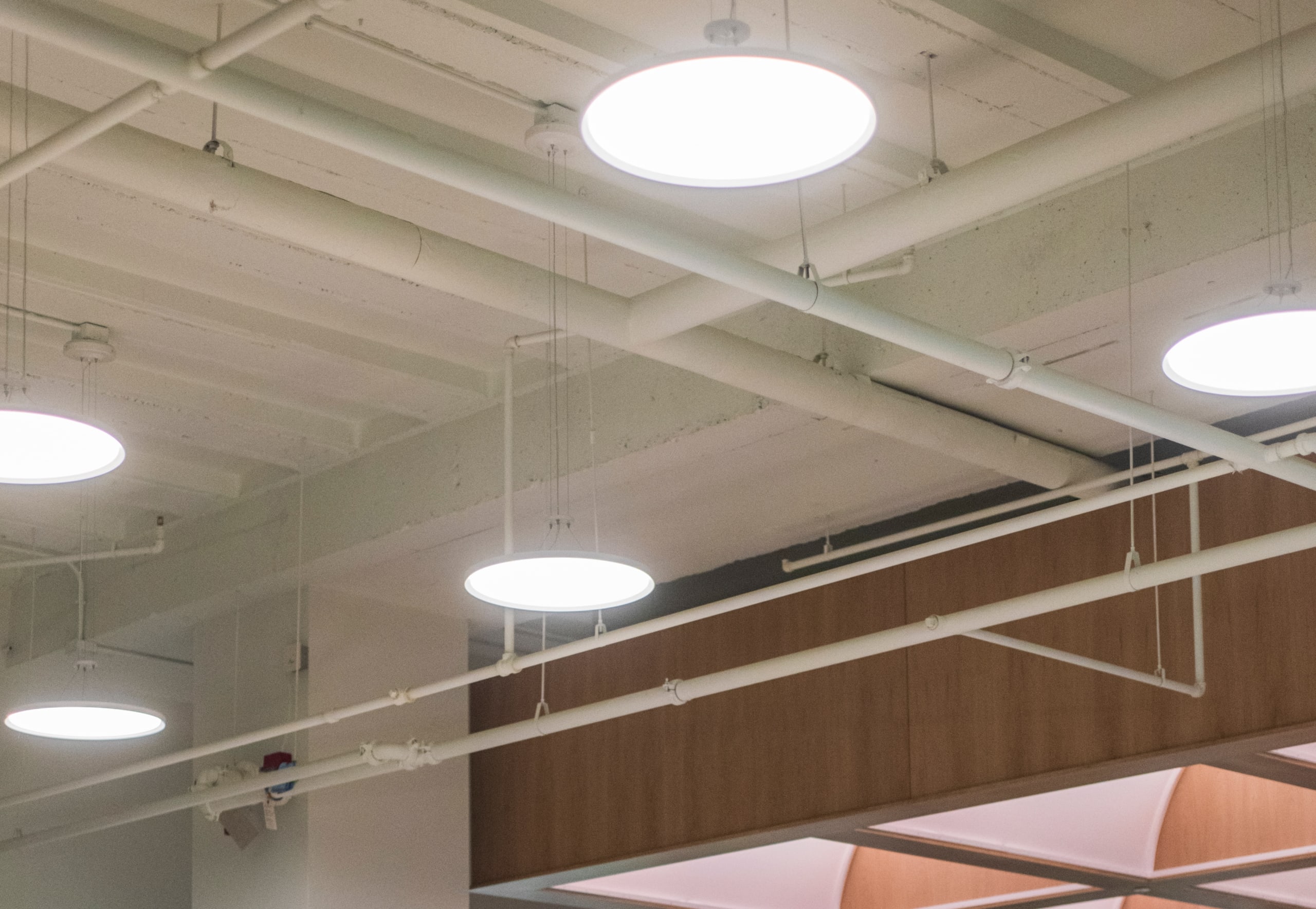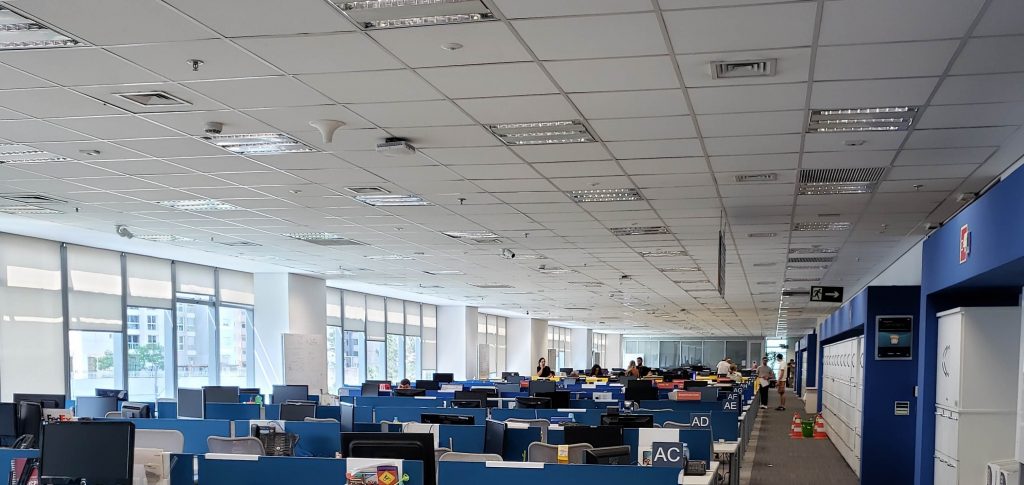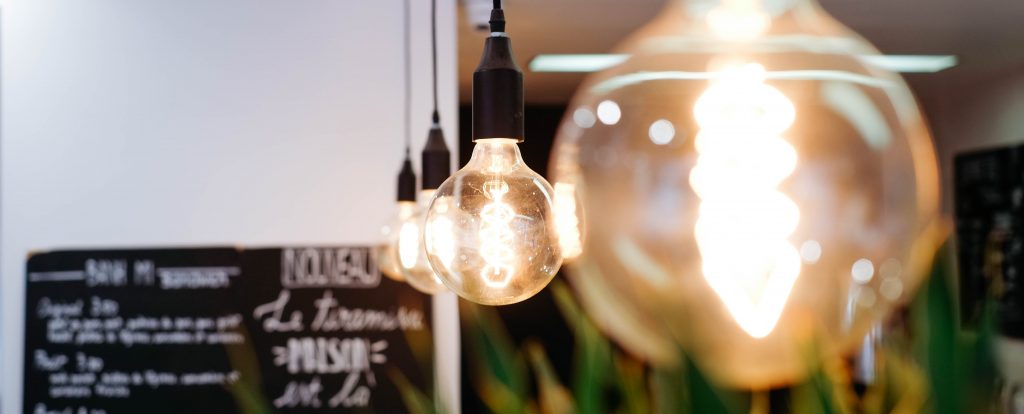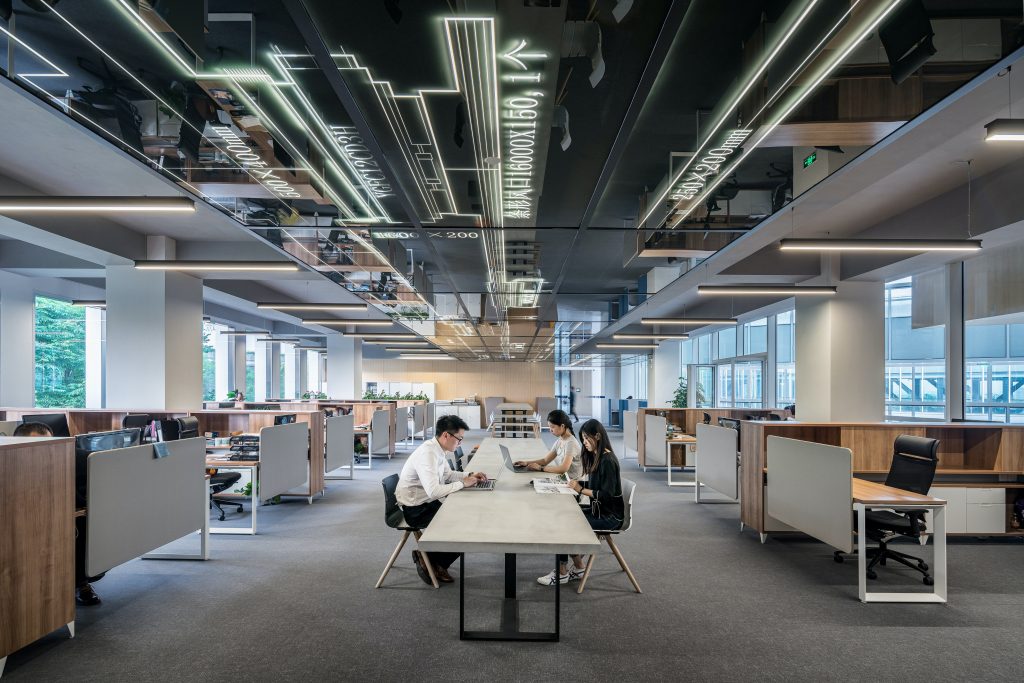
ARTICLE
Are your workplace LED lights too bright?
In a workplace, overly bright lighting can be distracting and may lead to health issues such as eye strain and headaches for employees.
A positive energy improvement for your workplace is to replace any traditional incandescent lights with LEDs. LEDs are more efficient, meaning they waste less energy, resulting in reduced energy bills and carbon emissions. However, businesses sometimes discover that after transitioning to LEDs, the lights appear much brighter than their previous ones, causing irritation.
Why does this happen, and what steps can you take to address it?
Why are LED lights so bright?
LED lights shine brightly because they boast a higher lumen rating compared to traditional incandescent bulbs. Lumens simply measure the total visible light emitted by a light source, so the higher the lumen rating, the brighter the lamp appears to the human eye.
The reason LED light bulbs have a high lumen rating is their efficiency. They convert the majority of energy into light, unlike incandescent bulbs that produce both light and heat, wasting energy. This efficiency means that LED lights can deliver a higher light output or brighter illumination with significantly lower energy consumption. This efficiency is precisely why they represent a fantastic improvement for energy efficiency.
LED light bulbs have a higher light output (lumens) than traditional incandescent bulbs – so a 60W LED bulb will appear much brighter than a 60W incandescent bulb.
This can be confusing because we’re accustomed to assessing bulb brightness in Watts. As a result, you might replace your 60W incandescent bulbs with a 60W LED light bulb and be surprised by the increased brightness. Watts are merely a measure of power, indicating the energy the light bulb consumes to generate light, but they don’t signify the light output.
How can you reduce the brightness of LED lights?
Some people find this bright light from LEDs can cause health issues, causing headaches and sore eyes – which can be exacerbated in a workplace environment where many of us spend our days looking at screens. So what can you do to reduce this?
Reduce the wattage
Because an LED light bulb is much more efficient and produces higher light output, you’ll likely require a lower wattage compared to your previous incandescent bulb. As a rough guideline, a 5 to 25W LED bulb can provide the same brightness as a 40-100W incandescent bulb.
To address this, start by checking the wattage of the LED bulbs you’ve installed. If they seem too bright, consider testing a lower wattage. Some LED bulbs may include a conversion factor on their packaging, indicating the equivalent in traditional light bulbs.

Opt for warm white
Traditional incandescent bulbs emitted a warm, almost yellowish light, and we’ve become accustomed to this as the norm. In contrast, LED lights offer a cooler, whiter illumination, making them seem brighter.
If you prefer the warmer tone, you can purchase LED light bulbs intentionally designed to emit a warm white light, usually indicated on the label. Another option is compact fluorescent lamps (CFL), which, while less efficient than LEDs (still more efficient than incandescent bulbs), provide a warmer, diffused light.

Check the positioning
In many offices, strip lighting is commonly used throughout the entire space, creating intense lighting for employees. However, a more comfortable alternative is task lighting, where lights are strategically placed to illuminate specific areas, fostering a more ambient environment. This can be achieved by reducing ceiling lights and incorporating desk lamps, or by adjusting the positioning of ceiling lights.
This approach is not exclusive to offices and can be advantageous in various workplaces. In manufacturing businesses or warehouses, for example, it’s crucial to ensure well-lit areas where machinery is used for health and safety reasons. Still, the entire space may not need constant intense lighting.

Make use of technology
In certain workplaces, lights are often left on all day, even when natural daylight is available. If this is the case in your workplace, we recommend using lights only when necessary to address issues related to excessive brightness.
Automating this process is possible with technologies like timers and automation, enabling you to schedule when the lights should be on and off throughout the day.
Additionally, installing a dimmer switch provides greater control over the lighting intensity, allowing you to dim the lights if they are too bright. This not only enhances control but also further reduces energy consumption for lighting.
Your energy efficiency journey starts here
Reducing energy waste is undoubtedly a smart business move. However, the continuing challenge lies in getting organisations to understand that getting started on their energy efficiency journey is not difficult or expensive.
To bridge this gap and emphasise the impact of energy efficiency on your workplace, our team of experts has crafted a free, downloadable Workplace Energy Efficiency Checklist. This checklist outlines straightforward, quick-win actions, serving as an accessible starting point for any workplace to reduce its energy bills and cut carbon emissions.
You might also like…

Why we need to improve the energy efficiency of our workplaces to combat climate change

Three easy ways to cut energy use by making more of the technology you already have

New record for smaller businesses equity investment

